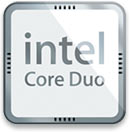I used yesterday to recompile Postfix, Courier-Auth, Apache and PHP with the 5.0.24a MySQL libraries. I just used my own instructions to compile everything.
I first did Postfix and Courier-auth as they would cause the least problems when it would go wrong. My backup mailserver would still receuve all mail and forward it to me when the mailserver is back online. It all went without a hitch, just did a restart of the programs and all was running as expected.
Apache posed an issue, how to compile and install, followed by compiling PHP without disturbing all the people looking at my sites. In the end it was simple. Compile and install Apache2, don’t restart Apache so the old version keeps running but the new software is available on disk. Then compile and install PHP using the new Apache installation files and when that is done restart Apache and all would be fine. Well that’s what I thought…
There was a small error in the modules that I included in the httpd.conf. Some of them, all concerning authentication, where rewritten and given different names. I was still trying to load the old ones as I didn’t update my httpd.conf to reflect these changes. So Apache2 wouldn’t start. I just commented out the old modules and added the new ones in my httpd.conf and presto, Apache 2.2.3 and PHP 5.1.6 are now running on my server, together with Postfix 2.2.3.
They’ve been running for almost a day now and I haven’t gotten any complaints yet.
If you are still running “ISP in a box” version 1 and want to upgrade but are still a bit afraid on how to do this let me know and I’ll help out.
Update:
Just found out there was an error, got a call on the phone from some of my friends that they couldn’t email anymore. When checking the logfiles I foud out I forgot a step after compiling and installing Courier auth:
sudo chmod o+x /usr/local/var/spool/authdaemon
In the logfile there was the error:
SASL authentication failure: cannot connect to Courier
authdaemond: Permission denied
Which means I didn’t follow my own instructions !
 Just installed MySQL 5.0.26 on my new Intel Mac mini after I just installed version 5.0.24a on it to create a new Intel based test environment. It was a good exercise to see if the update of the packages works as advertised. The binary installation package, which I installed first, creates a new symlinked directory and leaves the previous version intact. After that I still needed to compile from source as the shared library issue isn’t solved and I think it won’t be solved for some time as I found some info that the error is still there in the beta of version 5.1.
Just installed MySQL 5.0.26 on my new Intel Mac mini after I just installed version 5.0.24a on it to create a new Intel based test environment. It was a good exercise to see if the update of the packages works as advertised. The binary installation package, which I installed first, creates a new symlinked directory and leaves the previous version intact. After that I still needed to compile from source as the shared library issue isn’t solved and I think it won’t be solved for some time as I found some info that the error is still there in the beta of version 5.1. This morning I had some issues again, this time not my fault. It looks like the take over of my DSL network provider is causing some problems while they migrate the infrastructure. A lot of customers had a problem getting a new ip-address via DHCP on the network. Even though I’ve got a fixed ip-address the lifetime is set less then an hour and the computer needs to refresh. I was out for about 6 hours. From 04:50 CET till 11:10 CET. Sorry if you had any problems due to the outage, this is one of the things I don’t have any control over…
This morning I had some issues again, this time not my fault. It looks like the take over of my DSL network provider is causing some problems while they migrate the infrastructure. A lot of customers had a problem getting a new ip-address via DHCP on the network. Even though I’ve got a fixed ip-address the lifetime is set less then an hour and the computer needs to refresh. I was out for about 6 hours. From 04:50 CET till 11:10 CET. Sorry if you had any problems due to the outage, this is one of the things I don’t have any control over…  Finally the moment was there, I’ve made the decision. I raided the donations pot and picked up my first Intel Core Duo Mac mini. The
Finally the moment was there, I’ve made the decision. I raided the donations pot and picked up my first Intel Core Duo Mac mini. The  Finally got a spare moment to sit behind my dear Mac to write to you about the last security update. I’ve installed it right after I noticed the bouncing software update icon on the server and all is still running as expected. The updates are mostly for possible attacks on your Airport cards. I use Airport extensively and therefore needed the update. Read more about the update
Finally got a spare moment to sit behind my dear Mac to write to you about the last security update. I’ve installed it right after I noticed the bouncing software update icon on the server and all is still running as expected. The updates are mostly for possible attacks on your Airport cards. I use Airport extensively and therefore needed the update. Read more about the update